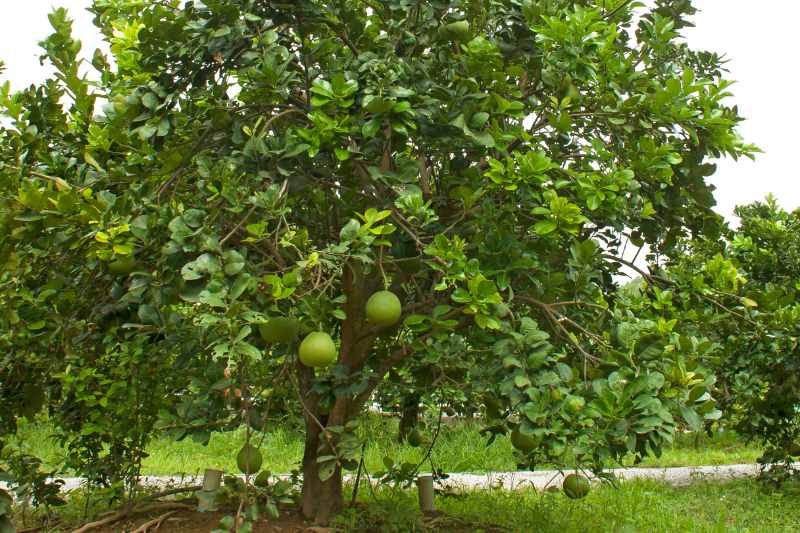Pruning citrus trees requires precise yet simple actions. A good pruning of the grapefruit tree ensures a beautiful harvest of pomelos. Let’s see when and how to prune a grapefruit.

Grapefruit or pomelo?
The pomelo, or Citrus paradisi in Latin, is often cultivated by individuals, typically producing smaller fruits. It is a hybrid between the grapefruit tree and an orange tree. Its "parent," the Citrus maxima (syn. Citrus grandis), is the common name for the true grapefruit tree, which grows taller, produces larger fruits, and is rarely cultivated in Europe, except in the Canary Islands. Whether you cultivate one or the other of these species, the pruning is the same.
Why pruning a grapefruit tree?
Pruning a grapefruit tree is primarily for reasons of size and habit. This beautiful fruit tree can reach up to 10 m or more in its natural environment. Like other citrus trees, it will produce fruit without pruning, but we aim to balance it, as its branches often spread out, and to keep it within reasonable proportions, to facilitate the harvest of the pomelos. As long as it is easy to harvest within reach, or planted in a large pot while remaining harmonious, pruning is optional.
When to prune a grapefruit tree?
Like the orange tree, grapefruit should be pruned at the end of winter, after the last risks of frost.
Intervene after the harvest—which generally takes place from January to the end of March depending on the varieties—and before the future flowering, meaning a pruning between late March and early April. It is important to prune just before or at the beginning of the growth of new shoots that will bear the future flowering, to ensure fruit! In regions with cooler climates, you should delay pruning by 15 days to three weeks.
You can intervene every two years, depending on the size your pomelo or grapefruit tree takes on.

How to prune a grapefruit tree?
As with many citrus trees, the maintenance pruning of the grapefruit will remain light when it occurs. It is important to avoid stressing the tree, especially if it is a young tree.
Whether you have planted it in a citrus pot or in the ground if you live in climate zones 9 to 11, the pruning of the grapefruit tree is done in the same way, with a well-sharpened pruning shear, disinfected with 70° alcohol (or bleach, as many horticultural specialists recommend).
Focus on four main prunings to limit its growth and balance its silhouette, clear it, while promoting fruit production. In this order:
- Remove the suckers, these shoots that emerge from the base or from the rootstock: remove at their base all the shoots that grow vertically and vigorously from below the graft point.
- Cut away dead, diseased, broken, or damaged wood.
- Finally, and this is usually the bulk of the work, thoroughly aerate the centre of the tree's branches to allow maximum light and air to penetrate. Remove branches that grow too high in the tree, making harvesting more difficult.
- Then, in early spring, around May, to boost flowering and thus fruit production, prune each new shoot by half, cutting 1 cm above an eye or a leaf node.
































Comments